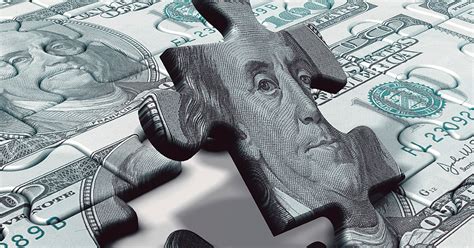“Every man takes the limits of his own field of vision for the limits of the world.” Arthur Schopenhauer
As we reached the end of the month, the quarter and the first half of the year the commentary on the economy and the financial markets was, in a word, grim. “Brace for Recession Shock After Worst Rout in 52 Years” Bank of America warned. “Stocks End Lower, Capping Off The Worst First Half In More Than 50 Years” Zacks.com headlined. Blockworks Daily, not appearing to be certain how to answer the question asked, “Did we survive?” The first quarter’s -4.60% return on the S&P 500 now looks like a walk in the park compared to the second quarter’s -16.4% containing within its confines the two worst months of a not very good year’s -20% draw down with June’s -7.6% being exceeded only by April’s -9.0%.
Investors are left to wonder if it would be best to exit the market with the .80 cents remaining of their beginning of the year $1.00, rather than to risk further losses in their already depleted portfolios. Declining markets create their own reality. With everyone who has sold glad that they did, and with the barrage of negative commentary offering multiples of reasons to sell, why continue to remain invested in a market which has offered nothing but pain this past six months? Certainly, the mood of our fellow citizens is gloomy. The University of Michigan’s Consumer Sentiment Survey has been measuring the emotional state of this nation for many decades. We’ve known some less than happy times including May of 1980 when interest rates were at 20% with double digit rates of inflation and unemployment reflected in that index at 51.7%, and the Global Financial Crisis of 2008-2009 when it was 55.3 in December 2008. June 2022 though, marks the historical low of our spirits with it now at 50.0.
We are now one year into our cohabitation with inflation. In fact, last year’s near 5% market decline in September of that year was in response to the Federal Reserve’s going public with their plans to terminate their Quantitative Easing program in preparation for their commencing a cycle of their raising interest rates in what is now this year. If we could see that train coming down the track heading towards us, then why the increasingly negative response from the stock market as we’ve progressed through this year? Some might offer the one word response “inflation.” But, if we knew inflation was an issue one year ago and its level isn’t notably worse than anticipated then, to repeat, why the decline in the stock market? The answer is not the inflation but the Federal Reserve’s interest rate increases of which we’ve now experienced three.
The global financial system is a highly leveraged one and a system that has become increasingly more fragile as the level of borrowed money upon which it rests has risen. The Federal Reserve’s interest rate increases are applying additional stress to that system and the stock market, and financial markets globally are concerned quite simply that “the Fed” may continue to raise rates until something “breaks.” The bullish case rests upon the belief that if we know this, they know it as well and thus are looking for a reason to terminate further rate increases sooner rather than not. That excuse may be presenting itself right here and right now as the economy is displaying notable signs of deceleration, accompanied by increasing evidence that inflation has passed through its peak levels and is prepared to trend downwards. Evidence of this is not very difficult to find. Copper and wheat prices declined 14.4% and 16.1% respectively in June. Natural gas prices fell 28.23% from June 7th to 30th. Crude Oil (WTI) prices fell from $122.11 to $105.76 per barrel from June 8th t the 30th, a decline of 13.4%, and 10 year treasury rates declined from 3.43% on June 13th to 2.94% at months end. Those are very large changes and would seem to provide incontrovertible evidence of a slowing economy with significantly declining inflationary pressures. Quite likely we are approaching the time when the Federal Reserve will declare victory over inflation and choose the new war against the possibility of economic recession to which it will redirect its focus. When this happens, investors should not be surprised to see a notable reversal in the downward trend stock prices have been on this first six months of this year.
June was negative as we’ve discussed, but also interesting is the similarity of the numbers expressing that negativity. Accompanying June’s negative 7.6% read was growth’s -7.8% and value’s -7.5% with small cap stocks down 7.8%. If this is misery at least there’s company. 60/40 (equity/fixed income) investors received at least a small measure of relief with the stabilization and subsequent decline in interest rates as bonds delivered a near break-even performance. Investors in those portfolios find themselves negative 14.32% for the year with 10.5% of that negativity being realized in the second quarter. We all look forward to the better days to be experienced and we look forward to sharing that experience with you!
Mark H. Tekamp, July 7, 2022



